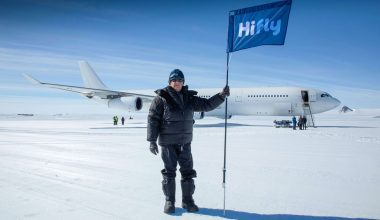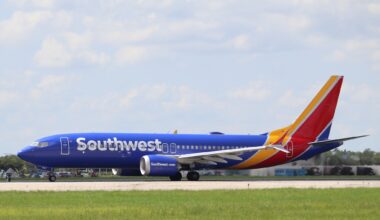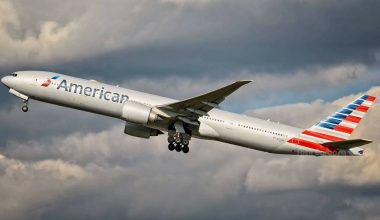In the years following the 2000s US Airways faced massive financial issues. On May 24, 2000, US Airways declared a proposal to be absorbed by the UAL Corp. for $4.3 billion. UAL Corp., at that time, was the most significant commercial carrier in the world and is the parent company of United Airlines. However, this acquisition was heavily objected to by multiple parties such as antitrust regulators, consumer advocates, and labor unions. This resulted in the stalling of negotiation of the deal, which caused both parties to lose money. Finally, the federal government blocked the deal between the two parties, and UAL Corp. withdrew from their deals on July 27, 2001. This meant that UAL Corp. had to pay a penalty of $50 million for backing off from the deal.

Following the terrorist attacks on the USA on September 11, US Airways business was hugely affected. The terrorist attacks resulted in an extended shutdown of the Washington National Airport, which negatively impacted US Airways, which was the airport’s largest carrier. This resulted in US Airways facing a substantial financial disaster, which caused the airport’s termination of the MetroJet network. This financial disaster also caused US Airways to furlough thousands of its employees and close down its subsidiary’s main operating base at the Baltimore-Washington International Airport. On August 11, 2002, the Airlines was forced to enter a Chapter 11 bankruptcy in the resulting year. US Airways were able to gain loans from the government via the Air Transportation Stabilization Board. With this, the US Airways were finally able to exit their bankruptcy in the year 2003. However, the US Airways were again forced to file for a Chapter 11 bankruptcy in 2004 just in 2 years. In 2005, US Airlines finally managed to merge with America West Airlines. Following the merger, the headquarters of the US Airways was moved to Tempe, Arizona, in the former corporate office of America West. The two airlines merged their operations under a single brand of US Airways due to their global recognition. However, the operations of these merged airlines were not unified until the year 2008. In 2006, US Airways launched a failed bid for the acquisition of Delta Airlines.
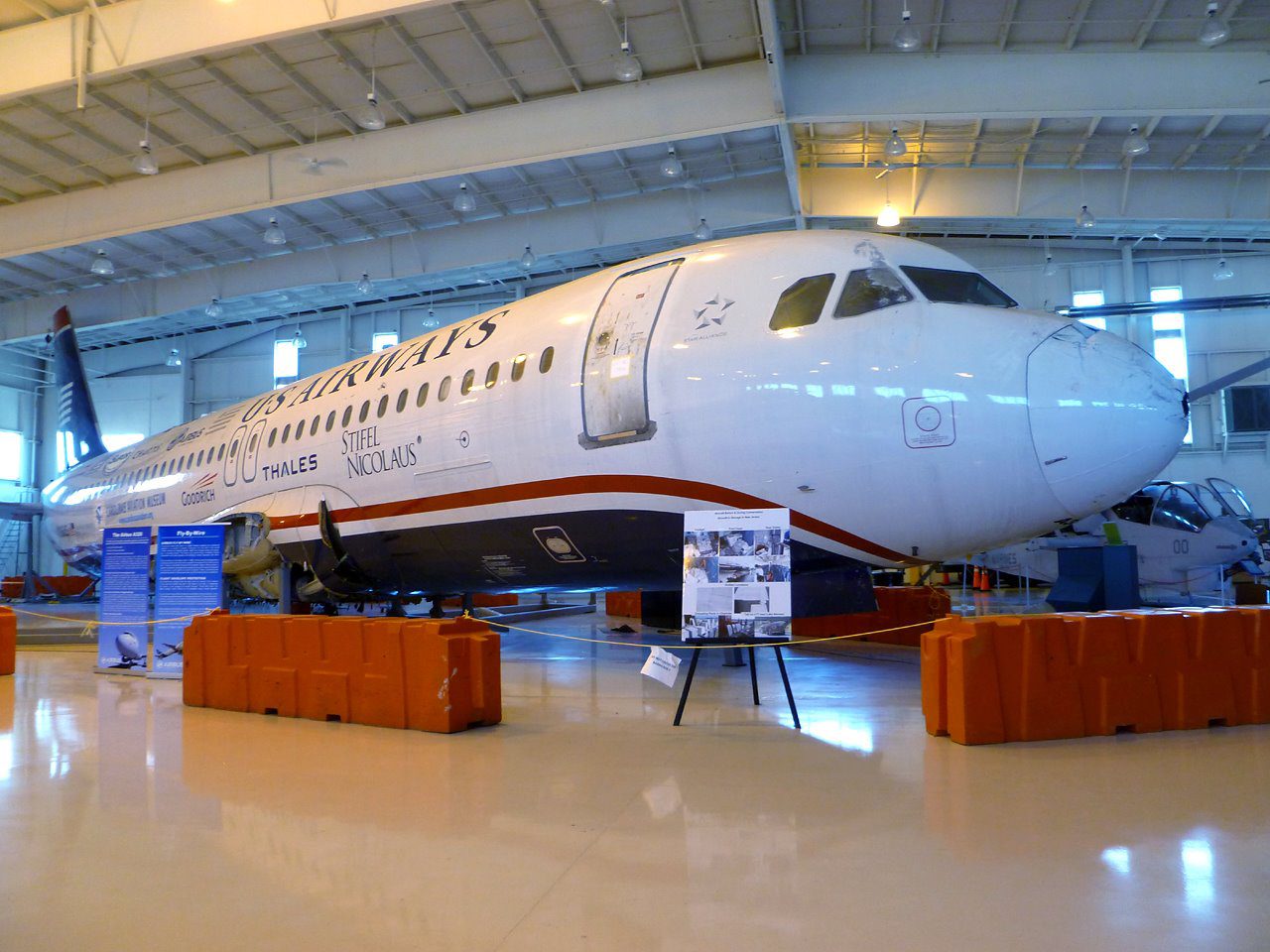
However, in June of 2007, based on the surveys of the Consumer Reports of nearly 23,000 readers for customer satisfaction, US Airways was ranked as the worst airline. The year 2007 also saw the termination of in-flight entertainment services for the domestic routes. Following the year 2008, US Airways also stopped the free drinks services, but this service was quickly resumed in March 2009. However, seeing customers’ low satisfaction rates, the US Airways strived to fix the various problems and issues. After a time-span of more than a year, US Airways finally fixed its various issues and problems in 2008. US Airways saw an increase in the airlines’ performances, with it being one of the best legacy carriers in the country. The airlines saw the best arrival and departure times among the US’s various major airlines and became the best primary carrier in the country. The University of Michigan’s annual American Customer Satisfaction Index on April 25, 2008, still ranked US Airways last on customer satisfaction. However, the airlines had shown significant improvement when compared to the past.
On April 25, 2008, US Airways was keen on merging its operations with other significant airlines, namely, United Airlines or American Airlines. This was partially triggered by the recent merging of Northwest Airlines and Delta Airlines. On April 28, 2008, it was reported that US Airways would finally announce their intention to merge with United Airlines in the following two weeks. However, this talk about the merging never came through and was formally ended in May 2008. Following the years, the airline saw a positive change and was starting to turn profits. On April 7, 2010, reports from The New York Times indicated that US Airways was still an in-depth discussion with United Airlines for a possible merger. Nevertheless, this was finally ended several weeks later on April 22, 2010, with United Airlines instead opting to merge with Continental Airlines.
Following the year 2011, US Airways was finally able to earn the top spot in the Airline Quality Rating (AQR) and was among the “Big-five” hub-and-spoke carriers. US Airways was still looking out to merge with one of the three major carriers in the US: American Airlines, Delta Airlines, or United Airlines. Shortly after, in January 2012, US Airways showed considerable interest in acquiring American Airlines, facing bankruptcy. US Airways officially announced the merger with American Airlines on December 7, 2012. The merger proposal was approved by the Bankruptcy judge and came to fruition. It was decided that the merged airlines of these two airlines would keep the brand name of American Airlines. It was also decided that it would base its operation in the American Airline’s hometown in Fort Worth, Texas. This resulted in the brand name of US Airways being discontinued. This was decided on July 13, 2015, and shortly after, on October 17, 2015, the final flight of the US Airways was flown.
History of US Airways
US Airways, formerly known as US Air, was one of the major airlines in America. The origin of US Airways can be traced back to the founding of All American Aviation Inc. In the year 1937, as a patent-holding company. Dr. Lytle Schooler Adams founded it alongside a sister company, Tri-State Aviation. Following the bill passed by the Congress, which allowed for the US Post Office to commence wide-scale experimentation on the system of an airmail pick-up in 1938, the du Pont brothers acquired stocks in the company. Shortly after, the du Pont brothers Alexis Felix du Pont, Jr. and Richard C. du Pont were able to obtain most of the company’s stock. This resulted in Richard du Pont being appointed as the new President of the company.

However, essential aviation services did not start until the year 1939. Initially, the airline had its headquarters in Pittsburg and mainly served the Ohio River valley in the year 1939. As the airline shifted its services from airmail to serving passengers in 1949, it was renamed as the All American Airways. However, the airline was renamed again during the year January 1, 1953, as Allegheny Airlines.
Following its success, the Allegheny Airlines were able to absorb the Lake Central Airlines in 1968 and Mohawk Airlines shortly after in 1972. With this, Allegheny Airlines was able to develop into one of the biggest carriers in the United States’ northeastern region. This success continued as in 1972, Allegheny Airlines became the ninth-largest airline by passengers carried and 24th biggest by the passenger-miles in the world. However, during its success in the 1970s, the airlines gained the nickname of “Agony Air.”
Subsequently, during the year 1979, the airlines again saw a change in their name from Allegheny airlines to US Air. This was mostly due to the passing of the Airlines Deregulation Act in 1978. This allowed the expansion of route networks of the airlines in the southeastern region of the United States. Following the years, US Air continued its expansion and mergers. In 1985, US Air managed to acquire Suburban Airlines and Pennsylvania Airlines, two commuter airlines—following that; US Air acquired the Pacific Southwest Airlines (PSA) in 1986, which was based in San Diego. Next was the Piedmont Airlines based in North Carolina and Winston-Salem in the year 1987. However, these acquisitions were only completed on April 9, 1988, for Pacific Southwest airlines and August 5, 1989, for Piedmont Airlines. In 1996, the US Air, to rebrand itself, renamed the airlines to US Airways. Alongside this, US Airways saw changes in the airlines’ logo to a stylized form of US flag with repainting of the planes belonging to the airlines. In the same year, US Airways also launched a new single-class subsidiary service named MetroJet.
Reviews of the services of US Airways
Cabins:
US Airways provided three different types of cabins with different services and amenities. These services depended upon the cabins’ cost, with the expensive class acquiring much more detailed services and amenities than the cheaper ones.
1. Envoy:
The Envoy cabin services were the long-haul business class option provided by US Airways. These cabins were usually available for long-haul flights flown to South America, the Middle East, and Europe. Passengers picking the Envoy cabin were provided with three different seating options depending on the plane’s model. These included:

- Reverse herringbone seating arrangements with 1-2-1 configuration with fully flat suites. These seats were available in the Airbus A330-330s and A330-200s model of planes used by the US Airways. These seating “pods” were fully flat and provided some form of privacy. It was designed as the Cirrus model by Sicma Aero seat.
- Deep reclining seats with reclines close to 165 degrees featured in the Boeing 767-200s configured internationally.
The first rows of seats in the Airbus A330-330s were the US Airways First class option for international flights. These seats were fully flat seats designed to provide the passenger with the utmost comfort. However, shortly after, the international service of US Airways was converted from three classes to a two-class system. As a result, these seats were offered to the Envoy class passengers for a small fee for a short period.
Each seat in the Envoy class featured an on-demand and personal video screen fitted into the seats’ armrest. In the absence of this, the airlines also offered a portable unit that could be used to view movies, play games, and watch certain television shows available in multiple languages. Each seat was also fitted with an AC outlet or an EmPower for passengers to charge their personal devices. The passengers of the Envoy class were also offered complimentary beverages and drinks services.
After the merger of American Airlines and US Airways, US Airways changed its short distance international premium cabins to business class. These included flights to Mexico, Canada, Central America, and the Caribbean. This was done to align the brand of US Airways with American Airlines.
2. First Class:
The First Class services were provided on all the mainline aircraft of US Airways, domestic flights, and on the US Airways Express with planes that had more than 50 seats. The seat pitch extended to anywhere from 89cm to 97 cm (35-38 inches), and the width of the seats ranged anywhere between 51cm to 53 cm (20-21 inches). On these premium cabins, complimentary beverages and drink services were provided. Free spirits, wines, and beer were provided to the passengers.

Alongside drinks, complimentary snack baskets were also offered in all the first-class cabins. However, complimentary dining and meals were only provided to flights that were longer than 2.5 hours. Additional amenities like blankets were also provided to the passengers on long-distance flights.
3. Main cabin:
These cabins or seats were available in all the planes of US Airways. The seating pitch of the Main cabin ranged from 76 cm to 84 cm (30-33 inches), and the width of the seats ranged anywhere between 43 cm to 46 cm (17-18 inches). The Main cabin services in the domestic flights had no complimentary meals services. Instead, US Airways had introduced a buy-on-board program that allowed passengers to buy full course meals for flights over 3.5 hours. On domestic flights shorter than 3.5 hours, passengers were instead provided with an option to buy a snack box. However, soft-drinks, tea, and coffee were complimentary to these flights, but alcoholic drinks were only available for purchase.
However, standard meals and drinks, including wines, were provided free of charge in flights flying the South American and Transatlantic flights. Passengers were also provided with the additional option of purchasing premium meals available on flights, including one complimentary alcoholic drink.
In-flight Entertainment:
US Airways had plenty of in-flight entertainment services on its flight. Onboard its Airbus A320/A319 fleet, the Embraer 170/175/190 fleet, and Airbus A321 plane, US Airways offered the in-flight GoGo Internet services. Alongside it, the GoGo video streaming services were also available for flights equipped with its services. The GoGo services were exclusively available for domestic flights and would usually cost around $5-$15.

Additionally, flights on Boeing aircraft over 700 miles also featured TV shows, and movies on the screen fitted overhead in coach class. These flights include flights to South America, Hawaii, Europe, and other domestic flights. Flights on the Airbus A330s aircraft had seats fitted with AVOD in both Business and Economy class, which had a selection of movies, music, games, and TV shows. Additionally, complimentary headsets were provided to the passengers of both Business and Economy class on the flight to the Middle East, South America, and Europe.
Frequent-Flyer Program or Dividend Miles:
US Airways Group had introduced its Frequent-Flyer Program, which was named as Dividend Miles. Members of this program could earn a mile for every mile flown on flights relating to the US Airways and its other partner airlines. Members flying on the Envoy or First Class have often acquired a 50% bonus mileage on their flights. Not only could the members earn points or miles by flying on the partner airlines, but they could also do so by using other services relating to US Airways. This included staying at partner hotels, car rentals, purchases with the credit card of US Airways, and purchasing the Dividend Miles malls. After the US Airways and American Airlines merger, the Dividend Miles was absorbed into the AAdvantage Program of American Airlines on March 28, 2015.
Lounges:
US Airways Club:
The airport lounge of US Airways was named as the US Airways Club. These lounges were found across 13 airports in the United States, with 19 lounges being used. However, after the merger with American Airlines, the US Airways Club was rebranded and renamed as American’s Admiral Club in 2014.
Access to this lounge was limited to its member and few other passengers, including:
- Passengers with Business Class (Envoy Class) tickets on international flights
- Oneworld Sapphire and Emerald members excluding the members of the US Airways Dividend Miles and American’s AAdvantage who flew domestically
Envoy Lounge:
US Airways previously had an Envoy Lounge in the Terminal A of the Philadelphia International Airport. The Envoy Lounge was exclusive to the:
- Passengers with Envoy class tickets
- Star Alliance Gold members
- Star Alliance international premium passengers
The lounge was incredibly useful and offered a wider variety of food than other US Airways Club due to its proximity to the long-distance international flights’ departing gate. However, during 2011 the Envoy lounge was reformed back to the standard US Airways club lounge and currently serves as an Admirals Club.
US Airways Express
The US Airways Express was founded in 1967 as a brand name for the regional associates of US Airways. There were multiple independently operated passenger air carriers and regional airlines operating the short and medium distance routes under this brand name. This initially began when Allegheny Airlines started operating Henson Airlines as an Allegheny Commuter. This was credited as the airways industry’s first agreement of code-share. This meant that Allegheny Airlines was the first major airline to make use of other airlines as one of its commuter partners. Henson Airlines also became the crucial predecessor to Piedmont Airlines, which is one of the US Airways Express carriers.
The use of the regional airlines by major airlines was mainly done to handle the services in serve routes that were not sustainable in larger aircraft, increase the frequency and consistency, and other competitive and business reasons. The operations of the US Airways express were usually conducted on the smaller scale of markets in the Bahamas, Canada, and the United States. These operations were mainly centered around the significant focus cities and hubs of the US Airways.
The aircraft of the US Airways Express was similar to the aircraft of the US Airways mainline but with one key difference. The aircraft of US Airways Express had the word Express attached to the basic livery of the US Airways.
Following the merger with American Airlines, US Airways Express was rebranded and renamed as American Eagle on October 17, 2015.
US Airways Mastercard
US Airways used to offer two different Mastercards for its passengers before its merger with American Airlines. The US Airways Mastercard offered a variety of benefits to its members. Passengers signing up for the Mastercard were generally offered a sign-up bonus, which offered individual miles to its members.
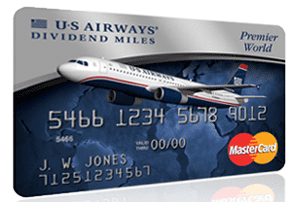
US Airways Dividend Miles Business Card:
Passengers signing up for this card were offered a bonus of 25,000 miles after their first purchase with an annual fee of $89. The benefits provided by this card include:
– Fee waiver for checked baggage for the cardholders with four additional companions on flights of US Airways
– Complimentary day pass to the Admirals Club and US Airways clubs.
Barclaycard US Airways Premier World Mastercard
The Barclaycard Mastercard was offered to its members with no requirement of minimum spending. Passengers signing up for this Mastercard were offered a sign-up bonus of 40,000 miles after the first payment. The annual fee of this Mastercard was $89. Benefits that were included in this Mastercard ranged from:
– Waiver of fees for checked baggage for the cardholder and four companions
– Priority boarding of Zone 2 on flights of US Airways
– Companion Certificate of $99 that could be used for two individuals traveling in the continental United States
After the merger of US Airways with American Airlines, these services were absorbed into the Mastercard services of American Airlines.
Conclusion
US Airways had one of the most extensive domestic and international routes in the United States. It had flights to 24 countries with over 193 destinations and flew 3,028 flights a day. This included 1,241 flights flown by the US Airways Mainline and 1,790 flights flown by the US Airways Express. The destinations ranged to the different regions of South America, North America, the Middle East, and Europe. On May 4, 2004, US Airways joined the Star Alliance and became its 15th member. Following March 2014, the airlines also became a member of the OneWorld alliance.
Since its founding days, US Airways has had many ups and downs in their journey. The airline has seen its fair share of success and failures. From the massive expansion it had to the two bankruptcies it faced in just two years, it had undoubtedly earned its fame as one of the major airlines in the United States. However, after its merger with American Airlines, it has ceased to use its brand name and has instead opted to use the brand name of American Airlines. The airline took the final flight in 2015 with flight 1939 as a commemoration of the birth of its origin, All American Aviation. While the US Airways brand name and logos are put to rest, its livery remains alongside the American Airlines logo as a nod to the traditional airlines.

